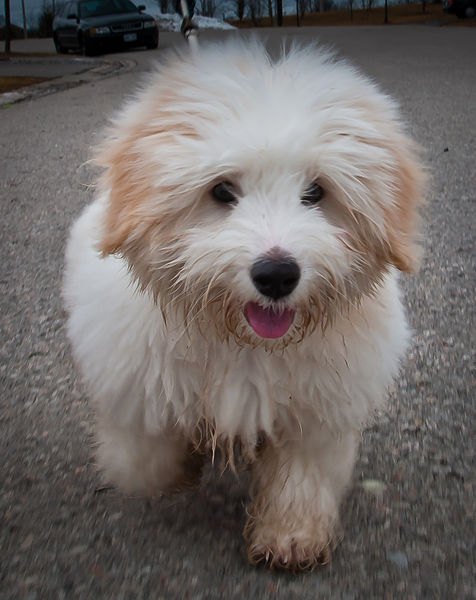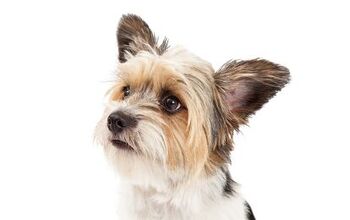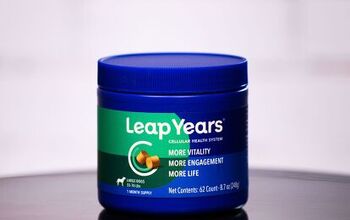Coton De Tulear


About Coton De Tulear
Sweet-natured and sporting a cottony-soft coat, the Coton de Tulear is a delightful companion that will happily become your shadow. Always ready to amuse you with its clownish and entertaining antics, the Coton wants nothing more than to please and be with you at all times.
Armed with a sweet temperament and super cute appearance, the Coton de Tulear is as happy with other animals as it is with people. Your Coton will become attached to you and won’t want to leave you side. He will adapt quickly to your household and lifestyle needs, making him the perfect dog for a variety of people. An indoor dog, he’s also a wonderful pet for apartments and condos. Please read on to learn about this fascinating breed.
Sweet-natured and sporting a cottony-soft coat, the Coton de Tulear is a delightful companion that will happily become your shadow.
The Coton de Tulear can trace its roots to the island of Madagascar more than three centuries ago. Some say that the Coton’s arrival in Madagascar in due to a shipwreck that had the breed onboard. Named for its cotton-like coat, as well as the seaport city of Tulear (known today as Toliara) in Madagascar, the Coton would accompany ladies on sea voyages and were also used to catch rats on these ships. Known as the “Royal dog of Madagascar,” it was owned by gentry and common folk alike.
In the 1970s, several Cotons were brought to France where their quickly gained popularity. They soon made their way to North America, but are still considered a rare breed.
Several hundred years old, many experts believe that the Coton de Tulear shares ancestry with the Maltese, Bichon Frise, and Havanese.
It’s important to feed your Coton de Tulear small, dry kibble from the start. Check the bag to see that the food includes high quality ingredients. Depending on what food you buy, your Coton will need about 3/4 cup of kibble daily, divided into two meals.
The Coton de Tulear is a real people-pleaser and he’ll want to please you when it comes to training.
The Coton de Tulear is a real people-pleaser and he’ll want to please you when it comes to training. Because this breed is intelligent, you’ll find that your Coton picks up on basic training quickly. Use positive training techniques and be sure to reward him with praise, play, and treats. After the basics have been mastered, move on to other challenges, such as agility training, doggy dancing and tracking exercises.
Although they are easily trained, the Coton can have issues picking up the finer points of house-breaking. Crate training will help your dog learn where it’s okay to do his business.
A small breed, the Coton de Tulear weight ranges from 8 to 13 pounds.
Happy and boisterous, the Coton de Tulear wants nothing more than to please his people. He’ll form strong bonds with his family, which means he can’t be separated from them for too long. This can lead to separation anxiety.
Your Coton can be quite clownish. They can walk on their hind legs and often cock their heads to one side when listening. This is also a vocal breed – your Coton will talk to you with grunts and growls, and likes when you carry on a conversation with him.
Even though they look like fluffly, delicate stuffed animals, Cotons are hardy dogs that like to rough-and-tumble. And because of his small size (and his sea-faring past), he enjoys travel.
The Coton loves kids of all ages. He’ll play happily play with children – catch is a favorite pastime. This breed also gets along well with other animals in the household or that he meets at the dog park.
The Coton de Tulear is a relatively health breed. There are a few issues seen in this breed, but they are not widespread. These include Neo-Natal Ataxia, Luxating patellas, Hip Dysplasia and Progressive Retinal Atrophy.
The Coton de Tulear has an average lifespan of 13 to 16 years.
The Coton de Tulear’s exercise needs aren’t excessive. A daily walk will suffice his needs. He also loves to play, so expect him to bring you a toy for a fun-filled game of fetch. He can play indoors or out, as long as he’s in a fenced-in yard. This dog works well in smaller spaces, as long as you’re playing with him and taking him out for walks.
Happy and boisterous, the Coton de Tulear wants nothing more than to please his people.
The Coton de Tulear is being recorded in the AKC Foundation Stock Service. The AKC provides this service to allow purebred breeds to continue to develop while providing them with the security of a reliable and reputable avenue to maintain their records. FSS® breeds are not eligible for AKC registration. Several of the FSS breeds are approved to compete in AKC Companion Events and AKC Performance Events.
The Coton de Tulear’s coat is cotton-like, and should be long, soft, supple and dense. It can grow to be 4 inches in length, once they reach adulthood.
The main color on this breed’s coat is white, with slight shadings of grey or red-roan (mixture of white and fawn hair) on the ears. Many puppies are born with black or brown markings on their faces and bodies. These markings usually fade to grey or light-brown after about 2 years. However, black or brown patches can remain quite dark throughout the dog’s life.
The Coton doesn’t shed much, but will need to be brushed three or four times a week. This will help cut down on matting.
Your Coton de Tulear puppy will be absolutely adorable. But that’s no reason why you should let him always have his way. Start socialization and training early, so your Coton can adapt to new situations and learn who the leader in your household is. Since this is a small dog, children should be careful when around these puppies.

Amy Tokic, Editor of PetGuide.com, is a passionate animal lover and proud pet parent of Oscar, a Shih Tzu/Chihuahua cross, and Zed, a Japanese Chin. Her love of animals began in kindergarten, when she brought her stuffed dog Snoopy into class with her every day. Now, she writes about her adventures in pet ownership and tirelessly researches products, news and health related issues she can share with other animal enthusiasts. In her free time, Amy loves perusing used book and record stores, obsessing over the latest pet products available and chasing squirrels with wild abandon (a habit attributed to spending too much time with her pooches).
More by Amy Tokic

























